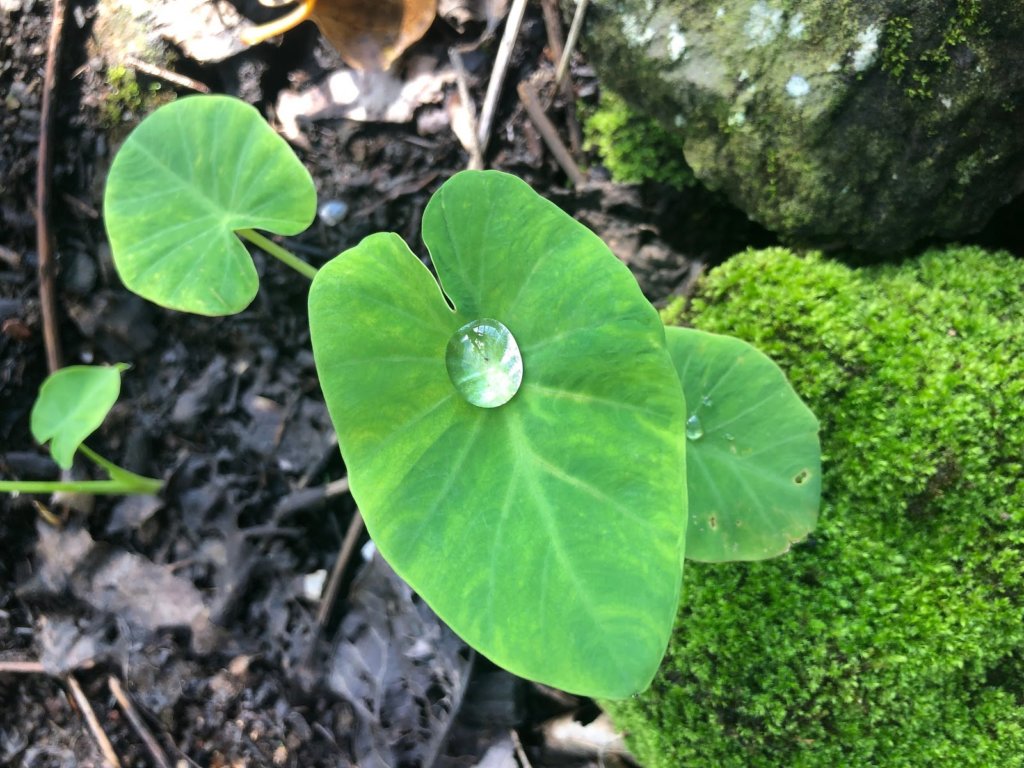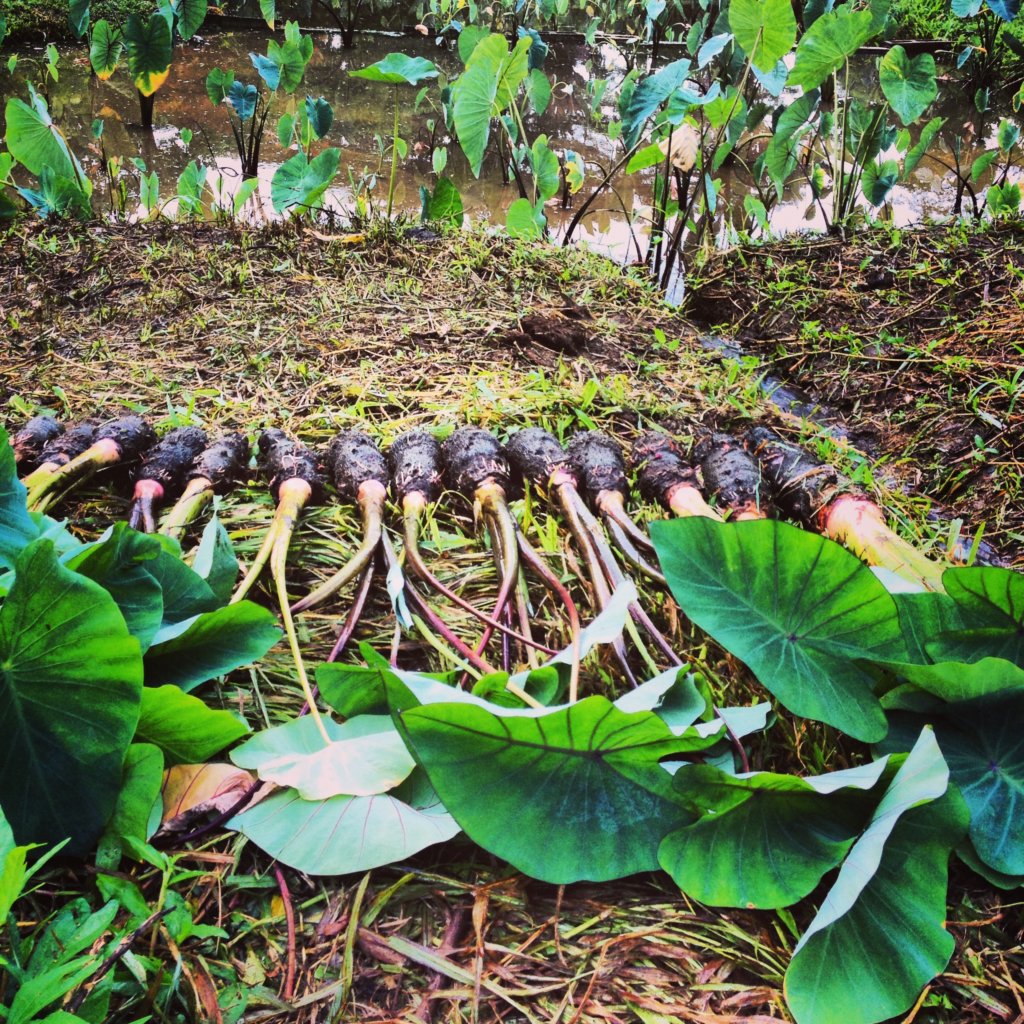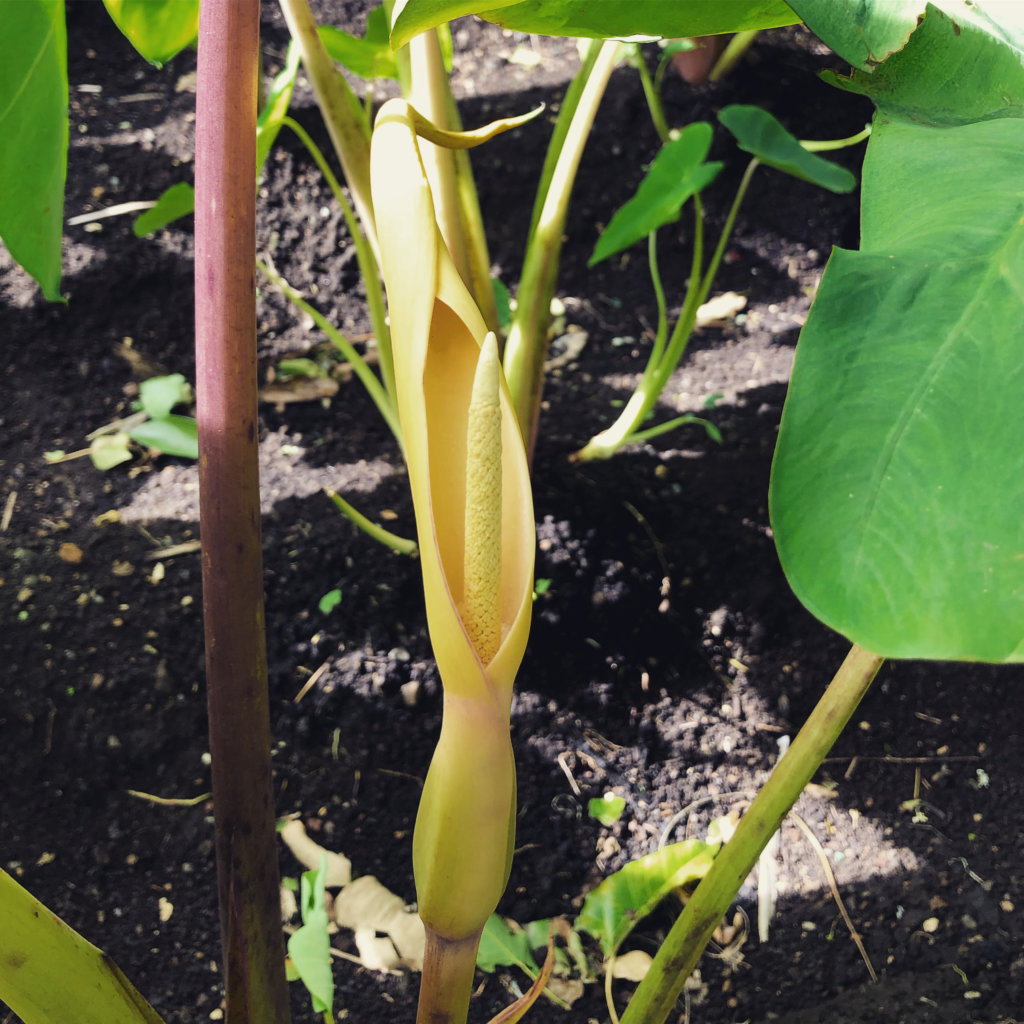Kalo (Taro)



Colocasia esculenta
Polynesian Introduction
Kalo is indisputably the most important plant in Hawaiian culture. Besides being the staple food source, it is also the center of spiritualism, mythology, and social structure. In Hawaiian culture, the kalo plant is literally the elder brother of mankind. As the elder brother, kalo nourishes us, and we, in return, must respect and care for the kalo. An estimated 300 cultivars of kalo were known to the Hawaiians. Steamed kalo is mashed into poi. The boiled leaves, called luʻau, are eaten like spinach.
Historically, kalo was planted, harvested, cooked, and served by men. It is grown both in loʻi kalo (irrigated terraces) and in upland gardens (like MHC). The mahiʻai (farmers) were admired for their skill in building irrigated kalo patches in the rich lands of the valleys in such a way that fresh cold water flows from the upper to the lower loʻi kalo. Mahiʻai refined kalo cultivation to a high degree.
One moʻolelo tells of Wākea, Father Heaven, who bore a child with the Daughter of Earth. Born prematurely, the infant, Hāloa, was in the shape of a bulb. Wākea buried the body at one corner of his house. The couple’s second-born child, also named Hāloa, was a healthy boy who would become the ancestor of the Hawaiian people. Hāloa was to respect and look after his older brother for all of eternity. The elder Hāloa, the root of life, would always sustain and nourish his young brother and his descendants.